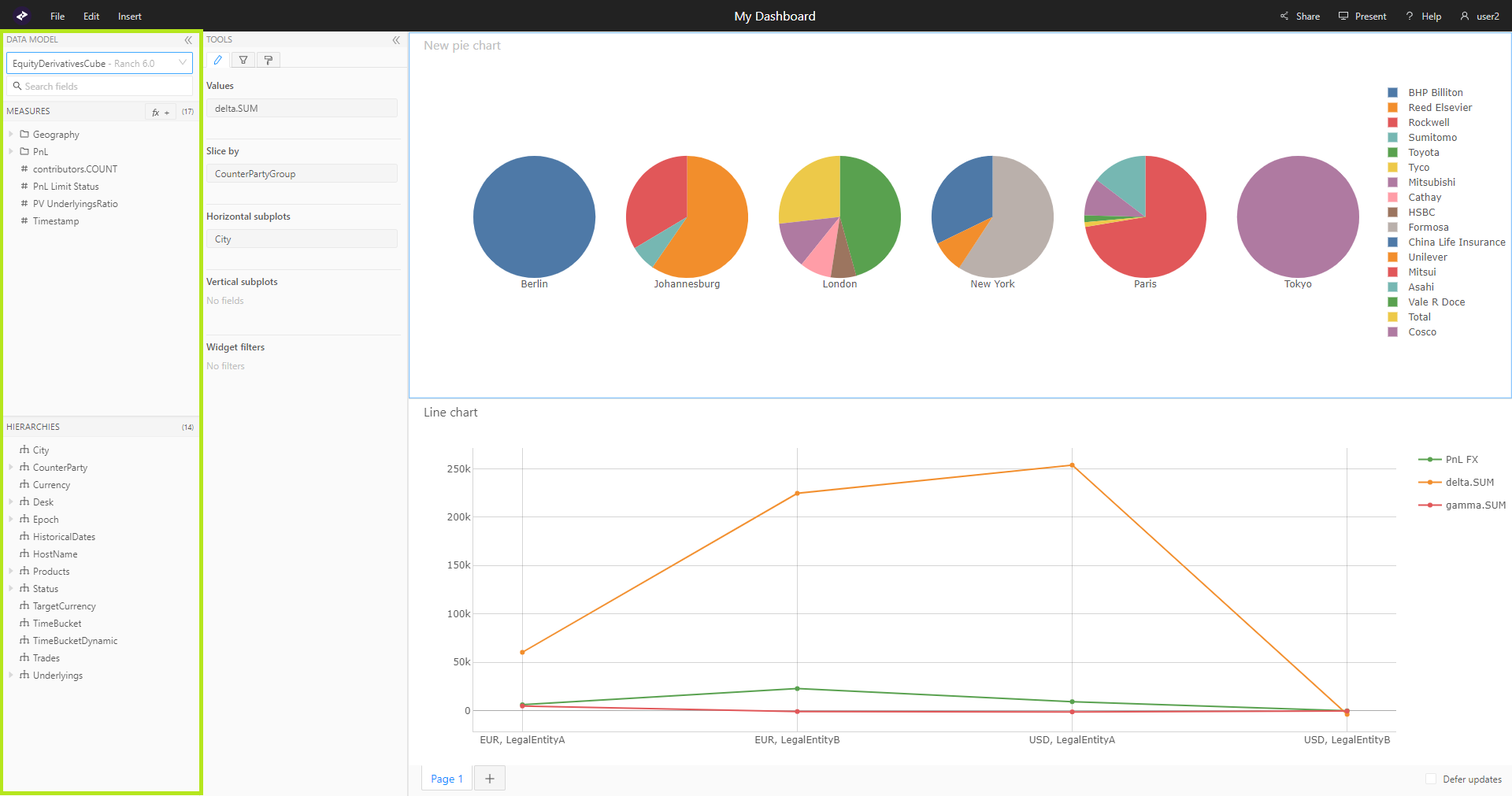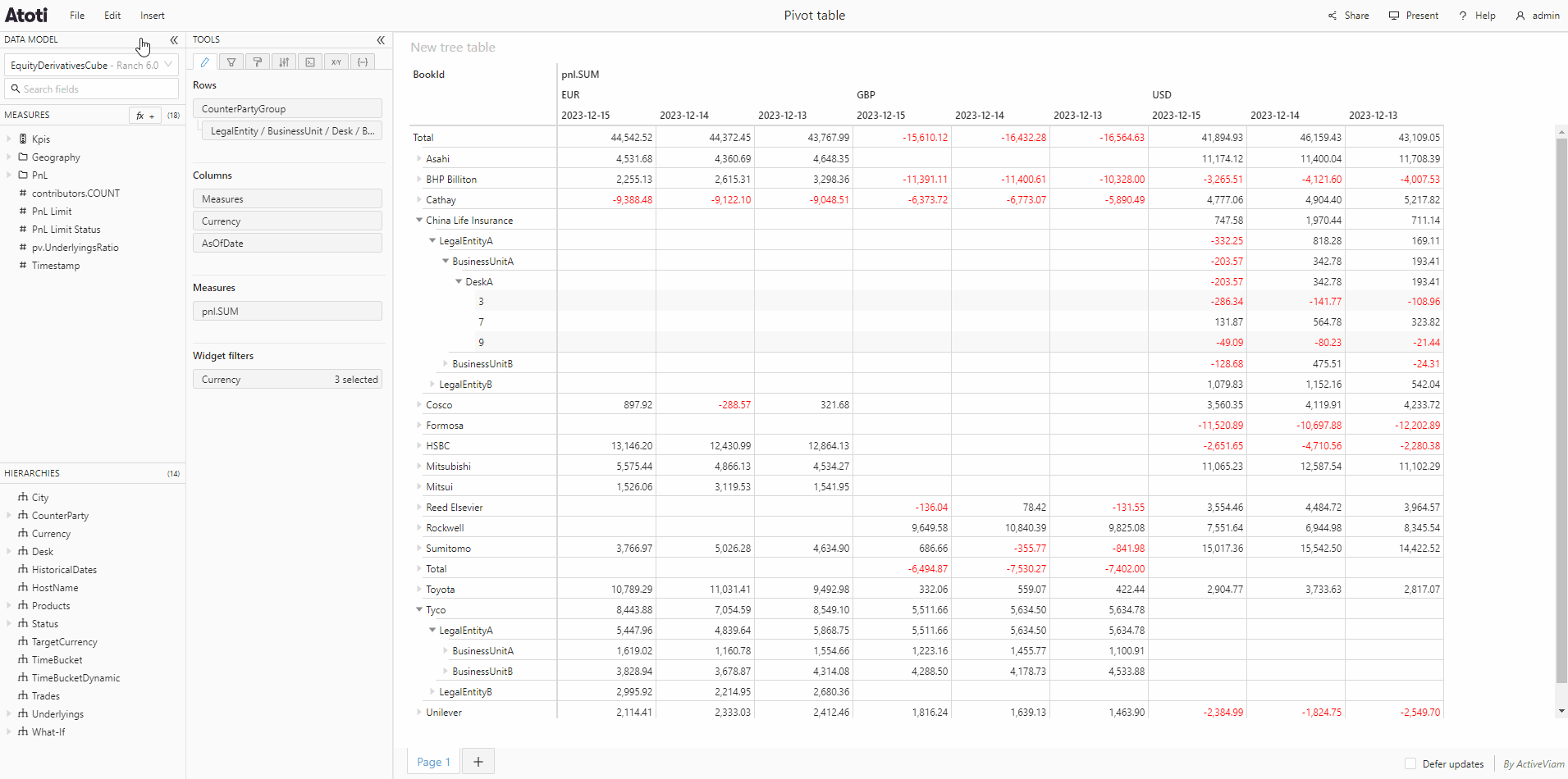Data model
The data model is located on the left of the application and displays all the hierarchies and measures from the Atoti Server cubes connected to your Atoti UI application.

When the Content editor tool is selected, you can drag and drop hierarchies and measures from the data model to the desired section of the wizard to use them in your widget, or you can click to add them automatically. You can quickly find hierarchies and measures by using the search bar at the top of the data model.
The data model can be expanded or collapsed by clicking the arrows in the top right corner. It can be resized by dragging from the right edge. The hierarchies and measures sections can be resized similarly to suit your preferences.

Cube
A Cube is a multidimensional view of some data, making it easy to explore, aggregate, filter and compare. In concrete terms, a cube contains dimensions, hierarchies, levels, measures, KPIs and sets. See OLAP cube for more details.
Each attribute of the data can be represented as a dimension of the cube. The axes of the cube are called hierarchies. The purpose of multidimensional analysis is to visualize some numeric indicators at specific coordinates of the cube. These indicators are called measures.
For details on how to change a widget's cube, see here.
Dimension
A dimension is a logical group of attributes, for example, Geography. You can think of it as of a logical "folder" containing hierarchies.
Hierarchy
A hierarchy is a subcategory of a dimension and represents a precise type of data. For example, "City" or "Territory" could be hierarchies for the "Geography" dimension. A hierarchy may contain one or more levels.
Level
A level is a subcategory of a hierarchy. Levels have a specific order with a parent-child relationship. For example, a "Territory" hierarchy has "Region" as the top level. "Region" expands into "Country" at the second level, and "Country" may have "City" at the leaf level.
Measure
A measure computes and aggregates information from the data. A measure isn’t a single result number, it’s more like a formula that can be evaluated for any coordinates of the cube. For example, the total number of records or the average size of orders.